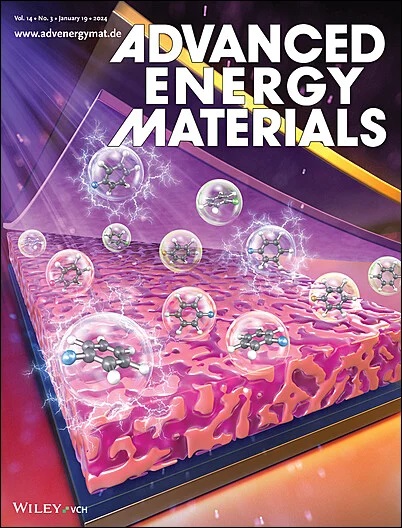Industrial Scalability of Zinc-Ion Batteries: Enhanced Electrochemical Performance with High Mass Loading Electrodes on Graphene-Coated Metal Current Collectors
IF 24.4
1区 材料科学
Q1 CHEMISTRY, PHYSICAL
引用次数: 0
Abstract
Zinc-ion batteries (ZIBs) have emerged as a promising energy storage solution due to their inherent safety, environmental sustainability, and cost-effectiveness. Utilizing water-based electrolytes, ZIBs eliminate fire risks and thermal runaway concerns, making them ideal for large-scale energy storage systems. The high theoretical capacity, low cost, high abundance, and low toxicity of zinc further enhance its suitability for grid-scale applications. However, conventional current collectors such as graphite foil exhibit limitations in scalability and mechanical properties, which make them unsuitable for industrial roll-to-roll manufacturing processes. This study addresses these limitations by exploring graphene-coated stainless steel foil as an alternative current collector. Here, graphene coating followed by heat treatment to remove the surface oxides improves the conductivity and corrosion resistance of the material. As a result, the fabricated ZIB exhibits high specific capacities of 1.90 and 0.91 mAh cm−2 at current densities of 0.3 and 2.0 C, respectively, and demonstrate a remarkable long cycle life with a capacity retention of 88.7% for up to 1500 cycles at a current density of 1.0 C, despite a high electrode loading of 13.27 mg cm−2. This innovation enhances the electrochemical performance and cycling stability, thereby advancing large-scale ZIBs as a safe, scalable, and high-performance solution.

求助全文
约1分钟内获得全文
求助全文
来源期刊

Advanced Energy Materials
CHEMISTRY, PHYSICAL-ENERGY & FUELS
CiteScore
41.90
自引率
4.00%
发文量
889
审稿时长
1.4 months
期刊介绍:
Established in 2011, Advanced Energy Materials is an international, interdisciplinary, English-language journal that focuses on materials used in energy harvesting, conversion, and storage. It is regarded as a top-quality journal alongside Advanced Materials, Advanced Functional Materials, and Small.
With a 2022 Impact Factor of 27.8, Advanced Energy Materials is considered a prime source for the best energy-related research. The journal covers a wide range of topics in energy-related research, including organic and inorganic photovoltaics, batteries and supercapacitors, fuel cells, hydrogen generation and storage, thermoelectrics, water splitting and photocatalysis, solar fuels and thermosolar power, magnetocalorics, and piezoelectronics.
The readership of Advanced Energy Materials includes materials scientists, chemists, physicists, and engineers in both academia and industry. The journal is indexed in various databases and collections, such as Advanced Technologies & Aerospace Database, FIZ Karlsruhe, INSPEC (IET), Science Citation Index Expanded, Technology Collection, and Web of Science, among others.
 求助内容:
求助内容: 应助结果提醒方式:
应助结果提醒方式:


